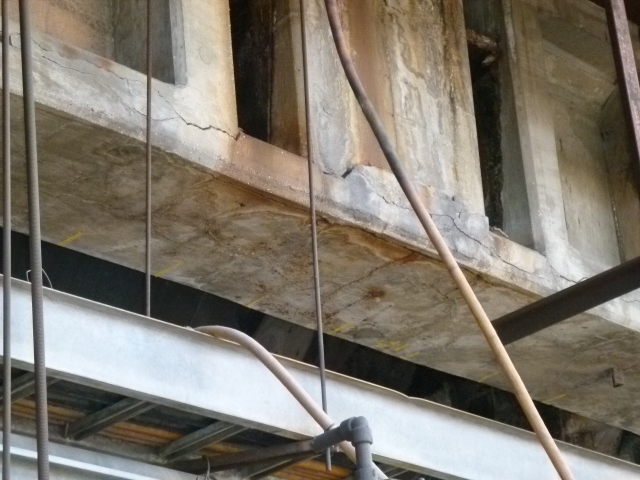In part 1 of this series we explored the danger to people and equipment of falling fireproofing. In part 2 of this series we focused on different types of fireproofing. In part 3, we will talk about the popular question, when do we need to make replacement or repairs?
Question 3: What amount of fireproofing deterioration requires replacement?
This is a popular question. Like many problems related to maintenance and reliability issues, the answer is “It depends”. It depends on the type and level of deterioration in relation to the three areas of risk; falling fireproofing, damage to underlying steel, and reduction of fire resistance. It also depends on what the service expectations (i.e. “goals”) are of that structure, at that facility. The goals will encompass expected service time, use / load, repair opportunity window, budget availability, and a host of other considerations.
Type and Level of Risk
The risk of falling fireproofing applies primarily to normal weight concrete fireproofing and is covered extensively in the first question [link to above Q1] so will not be repeated here. When fireproofing is deteriorated, the primary damage to underlying steel is allowing water to penetrate to the steel and not allowing that water to evaporate as quickly, thus prolonging the wetted time available for corrosion. This damage occurs in various ways and degrees depending on the type of fireproofing and where the damage has occurred (top, bottom, side, etc. of a vertical, horizontal, or diagonal member). Normal weight concrete has a passivating effect on the underlying steel and will help mitigate this corrosion for a much longer period than commercially available light weight cementitious and intumescent fireproofing. Further, light weight cementitious and intumescent fireproofing tend to hide underlying corrosion effectively. We have witnessed several instances of severe corrosion where the underlying steel was essentially non-existent and if the member would have been subjected to substantial loading (but well within “design” parameters), would have collapsed.
Through the evaluation of tens of thousands of structures for over a decade, Brindley Engineering has found large differences in corrosion rates depending on the type of fireproofing applied, quality of the application, service, location, and many other factors. The third type of risk is the reduction in fire resistance from damaged fireproofing. Damage comes in the form of missing fireproofing, extensive cracking, and time-based general deterioration (from UV, etc.). The damage lowers the time it takes the underlying steel to reach a critical temperature for failure to occur and can render the fireproofing ineffective in a fire. This is an area of extensive research by Brindley Engineering and will be discussed in further depth in the next question.
Goal Assessment & Recommendation
The type and level of risk must consider the service goals of the member and structure. Must the fireproofing be repaired prior to a certain date (say, for an outage)? Is the damage becoming extensive and is the beam in question supporting a large hydrocarbon source? Does the facility only infrequently have a small window of repair? What are the budget realities maintenance must contend with? These and many other factors influence the goals of the member and structure. Combine the goals with a consideration of the level, type, and extensiveness of damage, and this ultimately determines the recommended path forward to either monitor, repair, or replace existing fireproofing.
Talk to a Brindley Engineer Team today!
Nick Triandafilou – ntriandafilou@brindleyengineering.com
- Click here to read Part 1 of 5 Essential Fireproofing Questions
- Click here to read Part 2 of 5 Essential Fireproofing Questions
- Click here to read Part 4 of 5 Essential Fireproofing Questions
- Click here to read Part 5 of 5 Essential Fireproofing Questions



0 Comments